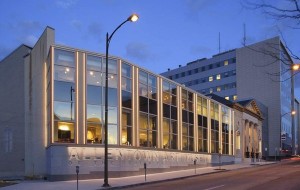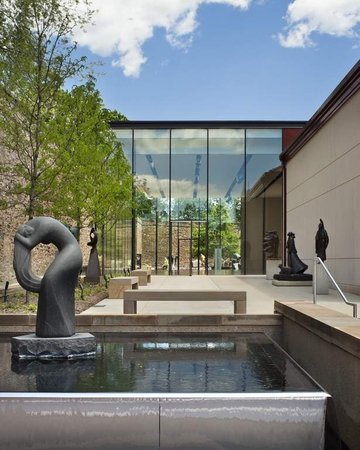Writing in the Philadelphia Inquirer last weekend, critic Inga Saffron made an interesting point:
Passing the Barnes Foundation’s sprawling new parking lot one recent afternoon, I was surprised to see half the spaces were empty. By evening, however, the joint was jumping, the lot was full, and many female visitors were wearing skyscraper heels, rather than the sensible flats of the serious museumgoer. That’s when it hit me that the real motive for cramming the lot onto the Barnes’ tiny site was to help the gallery promote itself as a party venue…
…museums everywhere are turning to more overtly commercial, moneymaking ventures. These days, people are just as likely to visit an art museum for a wedding reception as for the treasures on the walls.
Also, likely, another reason to move the Barnes away from the suburbs into the city center — it’s a better money-raiser.
The story isn’t about the New Barnes, though (see below for an update on that) — it’s about how two other regional museums, the James A. Michener Art Museum (left) in Doylestown, and the Allentown Art Museum (right), are using design to attract private events in hopes “that people who first encounter the museums as party guests will return as art patrons.”
Saffron approves of the Michener’s new design — “ crisp glass box in the tradition of Mies van der Rohe’s Farnsworth House outside Chicago.” She says “…the museum has already booked 25 weddings so far this year, along with its own lecture and music series, in the party room, which seats 180 people at tables. The pavilion’s ambitious architecture also seems to have emboldened the museum in other ways. It just opened a new show featuring rarely seen works from Florence’s Uffizi Gallery, the first international show staged at the Doylestown museum.”
In Allentown, the addition is “really an expanded lobby…designed to give the museum a flexible public space and, more importantly, a stronger public presence on Fifth Street, in the city’s downtown.” There, the once solid facade has been replaced by huge, clear windows that allow people to see into the lobby, the cafe and the bookstore from the street, she says.
Saffron is the architecture critic, and writes mostly about the buildings’ designs — but she approves of the idea that if these part venues help “get people in the door, that’s a good reason to celebrate.”
 Considering the alternative — shorter hours or higher admissions prices — it’s hard to disagree. Except for the New Barnes: being a party venue was not the biggest reason its backers wanted it to move from Lower Merion — turning it into a tourist attraction and gaining control ranked higher.
Considering the alternative — shorter hours or higher admissions prices — it’s hard to disagree. Except for the New Barnes: being a party venue was not the biggest reason its backers wanted it to move from Lower Merion — turning it into a tourist attraction and gaining control ranked higher.
 We have new evidence for that, as the Friends of the Barnes Foundation discovered the other day. They wrote:
In a recently-published blog post, Kimberly Camp, President and CEO of the Barnes Foundation from 1998 until 2005 wrote:“Bankruptcy was not the reason we filed the petition to move the Foundation to the city. At the time the petition was filed, the Barnes Foundation had a cash surplus and we had no debt – none. But, saying so made the rescue so much more gallant.â€
As a result, the ever resourceful Friends’ attorney, Samuel C. Stretton “has filed a Petition in Superior Court, asking that the Barnes Foundation case currently under appeal be remanded back to Judge Stanley Ott of Montgomery County Orphans’ Court. ”
He wrote:
This statement is shocking because it is absolutely contrary to the position and information presented by the Barnes Foundation during the hearings…Although it is late in the game now with the Barnes Foundation open in Philadelphia, the Court system has to have integrity and if the President and CEO says there was ample funds and that was just a false statement about financial difficulty, then this matter needs to be sent back down to Judge Ott to sort this out.
Camp has now taken down her posts, but here’s the “evidence” in a PDF called Some_Thoughts_on_The_new_Barnes_Foundation.
Here we go again.
Photo Credits: Courtesy of the Philadelphia Inquirer

